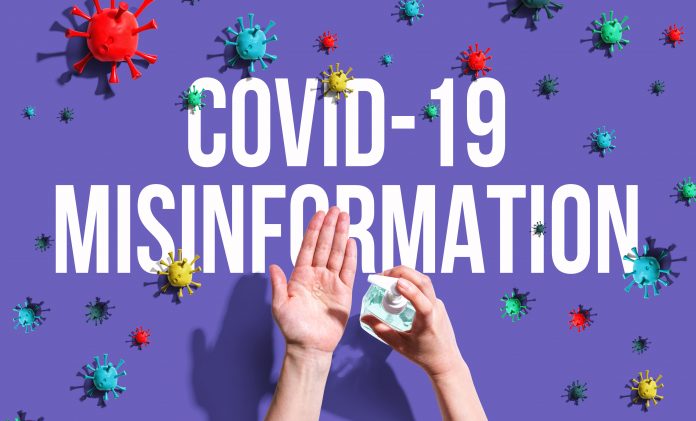Francesca Gargaglia, COO and CBO, Amity, argues that although social media platforms should be responsible for preventing the spread of COVID-19 misinformation, government agencies should build their own communities that build trust and promote well-informed discussions
If there is anyone thing that everyone can agree on during the time of COVID-19 it’s that misinformation spreads almost as fast as the virus. Social media platforms like Twitter and Facebook are breeding grounds for false information, and as infection rates rise and vaccines rollouts take place, it is only getting worse. After rumours of the vaccine affecting fertility in women swirled, Google saw a 39,400% increase in searches related to the topic.
This scaremongering of the public into believing conspiracy theories can be attributed mainly to 12 individuals The Center for Countering Digital Hate (CCDH) is calling the “disinformation dozen”. These online figures have amassed over 59 million followers over Facebook and Twitter and are responsible for nearly 65% of the anti-vaccine misinformation being shared.
Describing them as very dangerous, the CCDH expressed deep concern at how much false information was being shared and said that the dozen was instrumental in creating vaccine hesitancy at a crucial moment in the pandemic. ‘Dangerous’ is perhaps an understatement. People who subscribe to vaccine conspiracies are losing their lives.
Primed for engagement
The fact is that algorithms on social media platforms are primed for engagement. Recommendation engines on the platforms create a rabbit-hole effect by pushing users who click on anti-vaccine messages toward even more anti-vaccine content.
Governments across the globe have taken a predictable approach by condemning the sharing of misinformation and calling on social media platforms to remove harmful content. Although platforms have taken some measures to remove many posts CCDH’s CEO, Imran Ahmed, doesn’t pull his punches: “All have been particularly ineffective at removing harmful and dangerous misinformation about coronavirus vaccines.”
In short, social media is being manipulated on an industrial scale, and there is nothing Government agencies can do to regulate this. Social media companies have removed some misinformation but insidious and distorting stories about the detrimental effects of vaccines are still easily found, with damaging implications.
Messages that ignore reality
Rather than calling out for social media platforms to remove misinformation, government agencies and public sector organisations need to get smart. Individuals and groups that spread medical misinformation are clearly cognisant of the weaknesses of the engagement-driven systems on social media platforms. This is what they exploit.
So, isn’t it time for public sector outfits to leverage the widespread popularity of social media platforms and create their own online communities? They can disseminate information, engage with users, foster a sense of users being in the right place for the hard facts and enable real-time engagement to dispel myths and misinformation.
Responsibility to the public
At the heart of any government agency is responsibility to the public. This includes building public trust. And what better way to achieve this than creating safe digital environments for citizens to engage with by building their own platforms?
There are groups and individuals everywhere seeking others with common interests. These topics are near endless and some of the most obvious are sport and fashion. It doesn’t matter if your interests lie with tennis, quantum physics or video games, you’ll still find a relevant online community.
A public sector social platform that deals in facts and advice and is also a community forum, will likely have people lunging towards it in huge numbers, as a source of authoritative, unbiased information and practical help amid the fog of uncertainty and inane conspiracy theories.
And just because it’s a public sector platform it doesn’t have to be dull. It can incorporate all the functionality that people take for granted today such as live streaming, broadcasts, news feeds and chat channels.
Promoting truth
With a platform hosted by government agencies and public-sector organisations, in-app groups can be created; live streaming can be used to beat back the influence of misinformation and enable citizens to engage with each other effortlessly. Overall, it promotes positive communities, creates an online haven that can be trusted and boosts public sector connectivity.
In building their own platforms and functions, public sector organisations can regain control of their social experiences. This gives them the opportunity to control and moderate what’s being said within a trustworthy online community and show that discussions fuelled by misinformation and false claims are indeed dangerous, disingenuous and damaging to society.
We live in an age where social media dominates information consumption. Ignoring this simple reality severely reduces the opportunities for government agencies to get their message out there and fulfil their responsibility to citizens. Governments and public sector bodies should look to take back control of the social experiences they create and how they can regulate what is shared, so that misinformation is thwarted at the source.












Ministry of Truth and state censorship..
Yes, this will definitely make us trust the Government and the medical truth about the pandemic